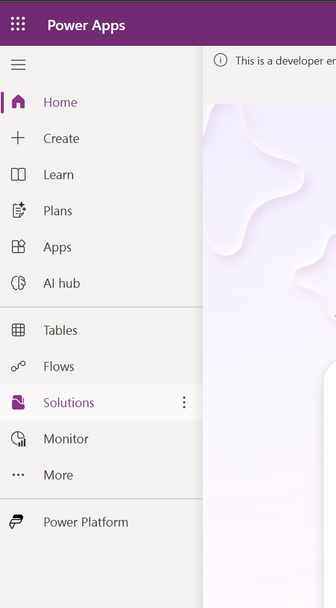Solutions for a Power Platform Project: A Pirate's Guide
Ahoy, matey! 🏴☠️
Ready to embark on a grand adventure into the world of Power Platform solutions?
Grab yer compass and set sail with me as we chart the course to creating a solution
that'll make ye the captain of yer own digital fleet! ⚓
Hoist the Jolly Roger and Sign In
First things first, ye need to sign in to Power Apps, Power Automate or Copilot Studio.
Navigate to the Solutions section from the left-hand menu. If ye don't see it, click on More and select Solutions from the list.
This be yer treasure map to the world of customizations.



Charting the Course - Creating a New Solution
Click on New solution and fill in the required fields:
-
Display Name: The name that’ll be shown in the list of solutions. Ye can change this later if ye fancy.
-
Name: The unique name of the solution. This be generated from the Display Name, but ye can edit it before saving.
-
Publisher: Choose the default publisher or create a new one. It’s wise to create a publisher for yer organization to use consistently across environments.
-
Version: Enter a number for the version of yer solution. This be important if ye plan to export yer solution

Adding Components to Yer Solution
Once ye’ve created yer solution, it’ll be as empty as a pirate’s chest without gold.
Ye need to add components to it:
-
Create New Components: Use the New command to create different types of components. After ye finish creating the component, it’ll be added to yer solution.
-
Add Existing Components: Use the Add existing command to bring in components that aren’t already in the solution




Tips & Tricks
Managing Yer Solution Layers
Solutions can be managed or unmanaged.
-
Unmanaged solutions be used in development environments while ye make changes.
-
Managed solutions be deployed to environments like test, UAT, and production.
Remember, ye can’t edit components directly within a managed solution. To edit managed components, add them to an unmanaged solution first.
Exporting and Importing Solutions
When ye’re ready to share yer treasure, ye can export yer solution from the development environment and import it into the test or production environment. This involves re-establishing connections and setting environment variable values.
Avoiding Cross-Solution Dependencies
Beware of cross-solution dependencies, matey! Segment yer solutions by component type to avoid risks. For example, have one solution for tables, another for plug-ins, and a third for flows.
Testing Yer Solution
Before ye set sail, test yer solution in the target environment to ensure it works as expected. This be crucial to avoid any mutiny from yer users.